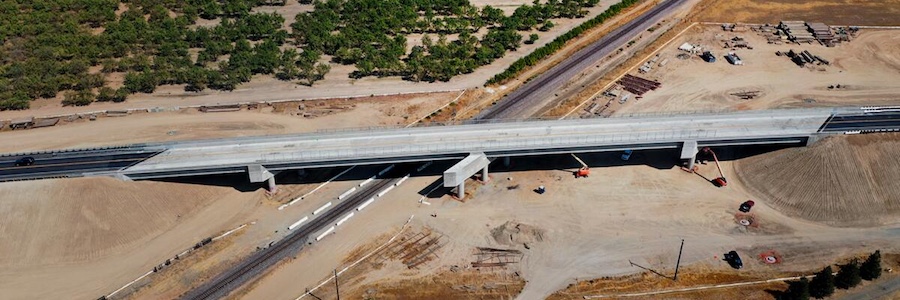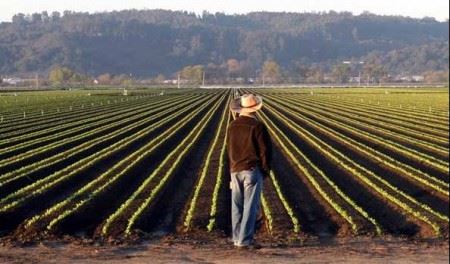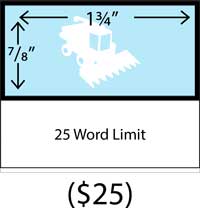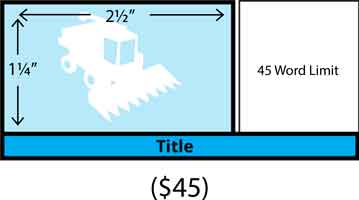California’s high-speed rail project is in serious trouble due to yet another recently discovered cost overrun of $10- $14 billion for the still uncompleted first segment of the system, the 171-mile Merced-to-Bakersfield line in the Central Valley. After many years of delays, this first segment is supposed to be completed sometime between 2030 and 2033, according to the California High-Speed Rail Authority.
California’s bullet train was originally pitched to voters in a statewide ballot in 2008 as a $40 billion bond project that could take riders from Los Angeles-to-San Francisco in 2 hours and 40 minutes, compared to about 9 hours on the existing Amtrak San Joaquins. The original completion date was 2020.
It sounded like a pretty good deal to most voters back then, so they approved it. But since then, the price tag for the original vision has swelled to more than $100 billion today, and most of the needed money has yet to materialize. High-speed rail in California is many years late and many dollars short.
The latest cost overrun of $10-13 billion for completion of the Merced-to-Bakersfield line adds to the ongoing funding (and public confidence) crisis because the federal government under President Trump isn’t keen on helping finance the project like the Biden Administration was, and the state of California can’t afford to fund the project on its own. The Trump Administration also has launched an investigation into the use of the monies the federal government has already contributed to the California high-speed rail project. It’s said it might ask for some of these funds to be returned by California to the federal treasury.
To date, the California High-Speed Rail Authority has spent about $13 billion on the project. California voters authorized $10 billion in bond money and the federal government has contributed about $4 billion. The state is now out of bond money, and officials need to come up with a financing plan for the Merced-to-Bakersfield segment by mid-2026, according to the inspector general’s office overseeing the project.
Recognizing this serious funding dilemma, Ian Choudri, the new (as of August 2024) CEO of the California High-Speed Rail Authority, is now pushing the state to support private funding for the rail system. Governor Gavin Newsom and state legislators must sign on to this plan in order for
Choudri, who has previously managed high-speed rail systems in Europe and his team to go forward with their plans to solicit private investment.
As for completing the San Francisco-to-Los Angeles segment, which is why most voters supported the bond measure originally, Choudri recently acknowledged that it will probably take more than two decades to complete it.
That’s a far cry from the 2020 completion date that the first head of the state’s high-speed rail authority touted in 2008. And what about additional cost overruns simply from inflation over the next two-plus decades? Probably many billions. Two decades from now for completion isn’t going to make the cut. Won’t the train technology itself be obsolete by then? For example, China, Italy and other countries are running new-generation bullet trains that have technology that’s far superior to what they were using a decade ago.
It seems to me that private investment – which obtaining won’t be an easy task – is about the only option the Governor and legislators have if they want to continue moving high-speed rail along in California. Moving it along simply means completing the first segment of the line, the Merced-to-Bakersfield leg, by the 2030-2033 target completion date.
If the state can’t even complete this segment, its reputation will be severely harmed, although some would argue that when it comes to the high-speed rail project, the state’s reputation has already been damaged beyond near-term repair.
So far the details on how the state would raise private investment funds are minimal. However, there was some interest shown by private investors who attended an industry forum earlier this year. However, according to what Choudry has told elected officials, the private investors who showed interest said they would need some form of security from the state in order to seriously consider investing.
In terms of private investment and bullet trains, Brightline, a private passenger train company, is building Brightline West, a $12 billion Las Vegas-to-Los Angeles high-speed rail system. The 218-mile system will, according to the company, feature all-electric trains that travel at 186-plus miles per hour, taking passengers from Las Vegas to Southern California in 2 hours and 10 minutes. The U.S. The Department of Transportation has contributed $3 billion to the otherwise private project.
Brightline broke ground on the Las Vegas-to-Los Angeles line in 2024 and the company says it should be completed around 2028. If that timeline holds up, it will be a big improvement over the continued delays from California’s public high-speed rail project.
Brightline has yet to make a profit though, having reported a net loss of nearly $550 million in 2024, which it attributed to debt financing and expansion (it’s a national company), so its future is less than guaranteed.
Brighline raises money for its various high-speed rail projects like the Las Vegas-to-Los Angeles line from private sources, including selling bonds and other equity instruments.
In my analysis, California is going to have to do the same thing in order to move forward with its high-speed rail project because there isn’t enough public money available to fund even the initial Merced-to-Bakersfield segment. Perhaps some sort of partnership with Brightline would even make sense? Private investment combined with the current government funding seems to me to be the only logical alternative if California’s high-speed rail project is to ever be completed.
The only other alternative is to abandon the high-speed rail project completely.

In fact, an increasing number of critics are saying the project will never be completed and may leave towering and unusable infrastructure stretching throughout the state’s agriculture heartland. More than 50 structures have already been built, including underpasses, viaducts and bridges to separate the rail line from existing roadways for safety. No tracks have been laid yet.
I think abandoning the project would be a tragedy for the state and its voters, who put their trust in their elected officials and approved the project many years ago. However, I also don’t think taxpayers should be asked to foot the bill to complete the project.
Agriculture also has a stake in California’s high-speed rail project.
Since its inception, California’s high-speed rail project has stirred passionate debate, particularly in the Central Valley, where the interests of agriculture and infrastructure have often collided. Agriculture is the economic and cultural backbone of the region, generating over $50 billion annually and feeding much of the nation. Because the high-speed rail system must cut directly through the Central Valley to achieve its goals of getting from Los Angeles to San Francisco, this geographic necessity has sparked friction between the imperatives of modernization and the preservation of fertile, productive farmland.
The tension dates back to the earliest planning stages in the mid-2000s, when farmers and agricultural advocates raised concerns about eminent domain, land fragmentation and water infrastructure disruption. The planned route bisects parcels of farmland, potentially rendering them inefficient or unusable. Additionally, in some cases construction cuts across irrigation systems that have been carefully engineered over decades, increasing operational costs and complicating water delivery, which is already a contentious issue in drought-prone California.
Despite these concerns, the California High-Speed Rail Authority proceeded, promising to minimize harm. They developed mitigation strategies, such as realigning routes to avoid the most valuable farmland, compensating farmers for lost land and providing funding to relocate infrastructure. However, implementation has often been uneven. Many growers have complained of bureaucratic delays, insufficient compensation and opaque communication. In some cases, the land acquisition process stalled planting schedules or led to legal challenges, increasing resentment among agricultural stakeholders.
On the plus side, the relationship between high-speed rail and agriculture is not purely adversarial. Some in the agricultural community have recognized the long-term benefits of reducing vehicle emissions and increasing access to rural areas.
Improved transportation infrastructure could lead to expanded labor mobility, better market access for farm goods and reduced shipping times. Additionally, by offering a more sustainable alternative to highway expansion, High-speed rail may help California meet its climate goal – goals that many farmers, as stewards of the land, increasingly acknowledge as essential to the future of agriculture.
The Central Valley has also seen ancillary economic benefits from the high-speed rail project. Construction jobs have boosted local economies and the promise of future stations in cities like Fresno and Merced has drawn investment interest in housing and commerce. Some agricultural businesses have even leveraged high-speed rail activity to modernize their own logistics and processing operations.
If the state abandons its high-speed rail project, which it might have to do, it will also be a disservice to California agriculture because the dramatic impact that it’s had on farming and farmers in state will have all been for naught. I doubt that at this point in time, for example, that the farmland acquired for high-speed rail in the Central Valley can be returned to farmers and farming, do you?
The state’s elected officials and the California High-Speed Rail Authority have to date clearly broken the promises that were originally made to farmers and California agriculture in 2008 and beyond.
It may be too late to salvage high-speed rail in California, and the argument that it should be abandoned has its merits. It also might simply happen by default because the mistakes made by the high-speed authority over the years and the amount of funding needed to complete even the first segment of the system are too insurmountable.
Building big things – roads, dams, colleges and universities, for example – are what made California “The Great Exception,” in the words of noted California historian and author Carey McWilliams. Hopefully those days aren’t over but the debacle that’s become California high-speed rail threatens to prove him wrong.







